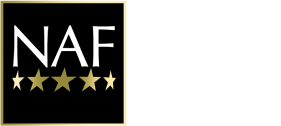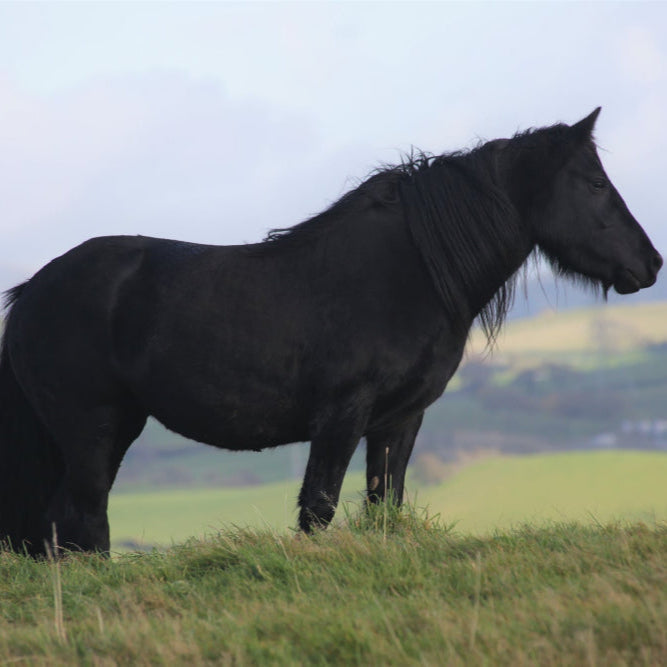Equine Metabolic Syndrome (EMS)
Any metabolic disease refers to the fact that the body is not correctly metabolising (breaking down and using) certain substances within cells, resulting in an unwanted accumulation in the system. In the case of horses, metabolic disease often surrounds glucose metabolism. The animal’s system does not respond correctly to dietary carbohydrates due to insulin dysregulation, leading to a build-up of glucose.
EMS, IR and ID are often used as interchangeable terms, however there are some differences between these closely linked conditions:
- EMS. Equine Metabolic Syndrome. Not a ‘disease’, as such, but an umbrella term covering a wide collection of risk factors relating to the endocrine system. The most serious potential consequence of EMS being laminitis.
- IR. Insulin Resistance. The result of EMS is that the horse’s system no longer responds correctly to insulin, the hormone controlling blood sugar. Cells in their body don’t take up glucose so well, leading to higher blood sugar levels. Thus the horse becomes Insulin Resistant (IR).
- ID. Insulin Dysregulation. IR is a component of ID, a broader term that covers both IR with response to dietary intake, and hyperinsulinemia, a higher resting insulin level. ID is now more commonly used in veterinary medicine as a term covering both ID and IR.
Who is at risk?
Typically, horses and ponies who have evolved to live in harsh, sparse environments have developed the genetic predisposition to metabolise extremely frugally. Phrases like:
‘he can live on fresh air’, or ‘she just looks at grass and puts on weight’
point out the usual suspects. Our native pony breeds are at particular risk, as they’ve evolved to live in challenging environments like Dartmoor, the Welsh mountains or Cumbrian Fells. These are all stunning areas, but with notorious winters, and it is here that EMS ponies actually thrive.
These breeds have naturally evolved as healthy ‘yo-yo dieters’ – gaining weight on the lush growth of spring and summer, and naturally dropping it again through the long, cold winters. Man’s intervention to prevent that annual weight loss, by taking them out of their natural environment, rugging up against the cold and providing additional feed over winter can predispose to metabolic disease.
However, it is not just the natives!
Breeds such as Arabian horses, developed in forage sparse desert conditions, are also prone to EMS. Through the integration of both pony and Arabian breeds in sport horse breeding, these ID traits can be seen in almost any breed of sport or leisure horse, and Warmbloods are particularly recognised as being at risk.
What are the signs?
The principle, and most concerning, consequence of EMS are episodes of laminitis, a serious, very painful condition of the hooves. However, laminitis is not the only sign, and we should be on the lookout for some of the earlier giveaways, to prevent us ever getting to that acute stage.
- Obesity
- Difficulty in losing weight
- Regional adiposity – accentuated fat deposits on the neck (‘cresty neck’), behind the shoulder, above the eyes, on the tailhead and around the sheath (male) or mammary glands (female).
- Increased drinking and urination
- Lethargy
- Reduced fertility in broodmares
Always discuss with your vet if you have concerns about your horse or pony and EMS.
Based on the animal’s history, soundness and body condition, your vet will often be able to get a good idea on the risk of EMS. However, it is possible for horses and ponies to be overweight with EMS or ID, and vice versa, it is possible for EMS to be present in leaner animals. Therefore, your vet may wish to do some additional testing to confirm the presence of EMS, and they may also be looking for signs of PPID (Pars Pituitary Intermedia Dysfunction), commonly known as Cushing’s Syndrome. Cushing’s, a different endocrine disorder, is particularly common in older horses and ponies.
Testing methods may include a blood sample to assess insulin and glucose levels, and an Oral Glucose Challenge test to look at the system’s response to dietary glucose. Further tests may be done, including X-rays to confirm the presence of any laminitis, or Cushing’s specific tests, such as assessing ACTH levels, which can help rule out, or confirm, the presence of PPID.
Management of EMS
As horse owners, we can directly make a huge difference to the health and life of EMS horses, as straightforward management steps are really key to this condition. EMS is similar to Type II Diabetes in people, and just as we see there, diet and exercise are keystones of success. Although pharmaceutical intervention is sometimes advised, exercise and dietary management of EMS often provides a more long-term and sustainably beneficial approach.
Importance of Exercise
Just as with people managing their diabetes diagnosis, exercise should play a key role in equine management of EMS and ID. Regular exercise not only helps to keep excess weight down, but also improves the body’s response to insulin.
However, it is important that the exercise is appropriate to the individual, and certainly during and following any bouts of laminitis, exercise may not be possible and advice from your vet should be closely followed.
Nutrition for EMS
EMS horses and ponies need a low sugar and low starch diet. Firstly ask yourself whether they need additional hard feed at all or not? If in light to medium work, it is highly likely that their basic forage diet will meet energy and protein requirements. Though remember a forage only diet will be unbalanced for micronutrients, so add a suitable broad spectrum supplement or super-concentrated balancer.
It is really important to also remember that the largest part of their diet, and therefore the most influential on weight gain, is their forage – which will mean pasture for much of the year, and preserved forages over winter.
- Pasture management. It is likely that your EMS horse or pony will need their grazing managed in some way. See our Grazing Management Blog for ideas on how you can do that with the facilities you have available.
- Preserved forages. Try to find a reliable source of hay suitable for EMS. Do ask the supplier for the analysis, and ideally you are looking for a Water Soluble Carbohydrate (WSC = sugar), level of <10%.
- Soaking Hay can help reduce sugar levels. A relatively short soak, of around an hour, in cool water will reduce sugars significantly without impacting nutritive quality. Soaking for extended periods of time such as overnight can introduce undesirable risks such as microbial growth, fermentation and nutrient loss.
- Targeted nutrition. From complex gut support, dietary magnesium for glucose metabolism, zinc and biotin for hoof integrity along with selected herbs working in sysnergy to support healthy metabolism, can also play a role in supporting EMS
If you need more advice or would like some nutritional support for how to manage you EMS horse or pony, contact our team today!
Selected References
- Bochnia M, Pietsch C, Wensch-Dorendorf, M. Greef M, Zeyner A, Effect of Hay Soaking Duration on Metabolizable Energy, Total and Prececal Digestible Crude Protein and Amino Acids, Non-Starch Carbohydrates, Macronutrients and Trace Elements, Journal of Equine Veterinary Science, Volume 101, 2021, 103452,
- Durham AE, Frank N, McGowan CM, Menzies-Gow NJ, Roelfsema E, Vervuert I, Feige K, Fey K. ECEIM consensus statement on equine metabolic syndrome. J Vet Intern Med. 2019 Mar;33(2):335-349.
- Hllman I, Karikoski N, Kareskoski M. The effects of obesity and insulin dysregulation on mare reproduction, pregnancy, and foal health: a review. Front Vet Sci. 2023 Apr 20;10:
- Silvia P. Turner, Tanja Maria Hess, Kibby Treiber, Erica B. Mello, Bruno G. Souza, Fernando Q. Almeida. Comparison of Insulin Sensitivity of Horses Adapted to Different Exercise Intensities. Journal of Equine Veterinary Science. Volume 31, Issue 11. 2011, p 645-649.
Written by: Dr Andy Richardson, Veterinary Director. BVSc Cert AVP(ESM) MRCVS. And
Kate Hore, Head Nutritionist. RNutr (Animal), R.Anim.Technol (Cert), BSc(Hons).


